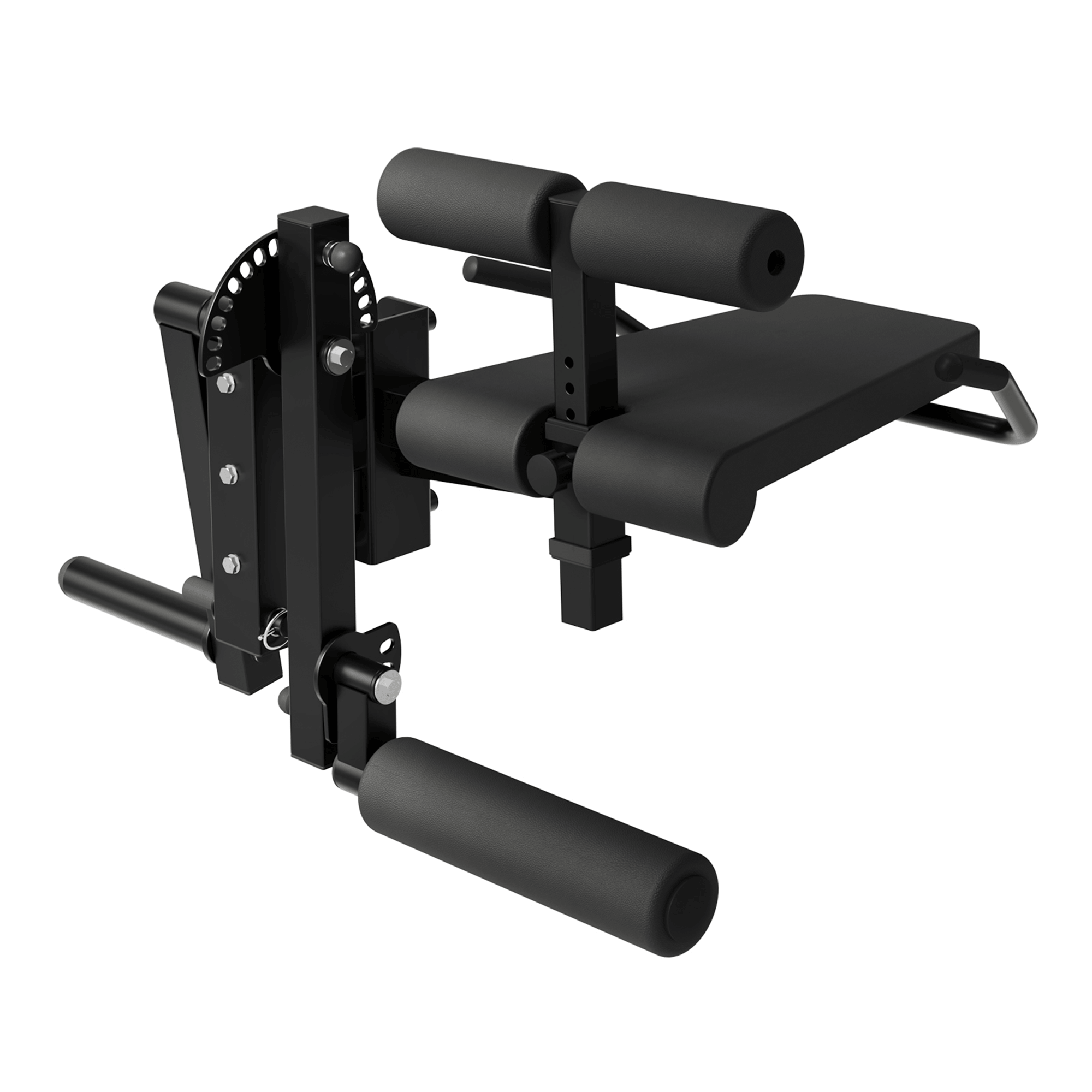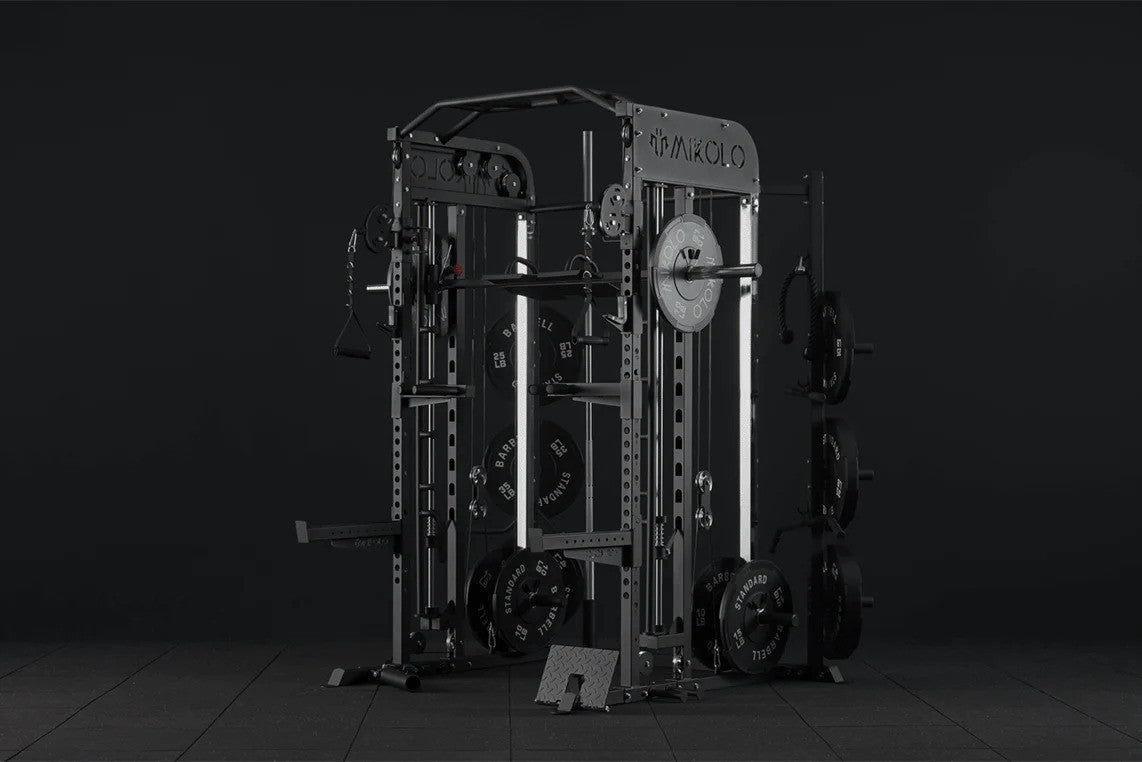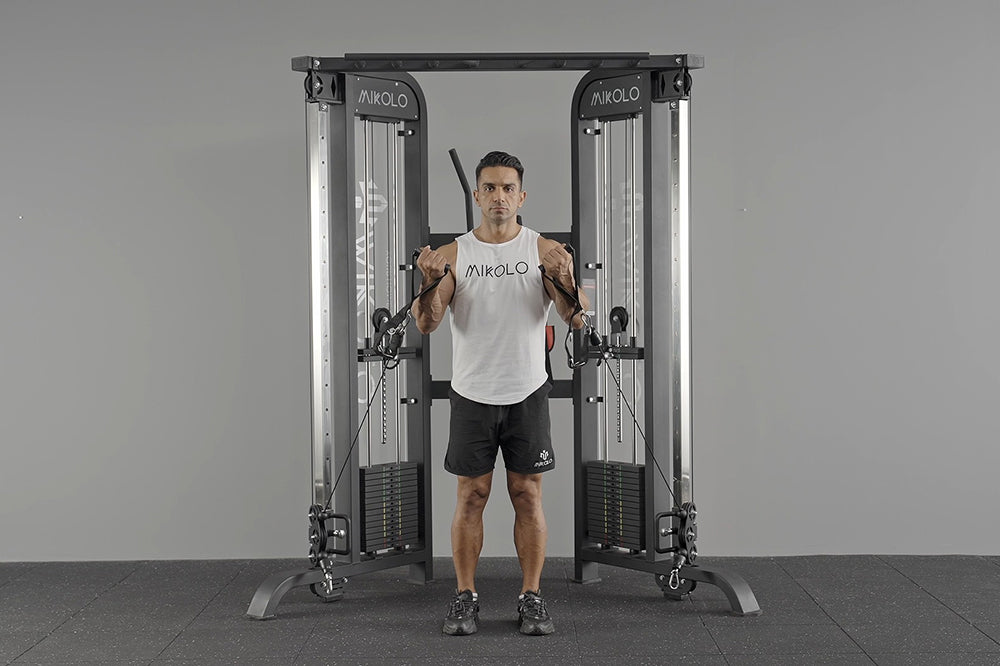The leg press machine has long been a go-to for building lower-body strength, but it isn’t always accessible, suitable for every trainee, or the best choice for functional movement. Whether you’re limited by equipment, want to vary your routine, or need a different stimulus to break through a plateau, there are plenty of tried-and-true substitutions that target quads, glutes, and hamstrings just as effectively.
1. Bodyweight Alternatives
Walking Lunges
-
Why it works: Places emphasis on unilateral strength and balance.
-
How to do it: Step forward into a deep lunge, keeping the front knee over the ankle; push off and bring the rear foot forward into the next rep.
Bulgarian Split Squat
-
Why it works: Intensifies quad and glute activation by elevating the rear foot.
-
How to do it: With one foot on a bench behind you, lower into a squat on the front leg; drive through the heel to stand.
Wall Sit
-
Why it works: Isometric hold builds muscular endurance in quads without loading the spine.
-
How to do it: Slide down a wall until thighs are parallel to the floor, hold position with back flat against the wall.
2. Free-Weight Alternatives
Back Squat (Barbell or Dumbbell)
-
Why it works: Offers full-body engagement and allows heavy loading for strength gain.
-
Tip: Maintain a neutral spine and sit back onto the heels to shift emphasis onto quads.
Goblet Squat
-
Why it works: Provides a core-stabilizing front-loaded position that encourages upright torso and deep squat.
-
How to do it: Hold a dumbbell or kettlebell at chest height, feet shoulder-width, descend until hips break parallel.
Front Squat
-
Why it works: Places more load on the quadriceps and requires upper-body mobility.
-
Tip: Keep elbows high and chest lifted to prevent the weight from rolling forward.
3. Machine-Based Alternatives
Hack Squat Machine
-
Why it works: Mimics the leg press angle but encourages a more upright posture, reducing lower-back stress.
-
Form cue: Push through the mid-foot and keep knees tracking over toes.
Smith-Machine Squat
-
Why it works: Provides guided bar path for safety, letting you focus on leg drive.
-
Progression: Vary foot placement—higher on the platform for glute focus, lower for quad emphasis.
4. Cable- & Band-Based Options
Cable Squat
-
Why it works: Delivers constant tension throughout the movement arc.
-
How to do it: Attach a handle at the low pulley, face the machine, hold the cable at chest level, and squat.
Resistance-Band Squat
-
Why it works: Portable and perfect for home workouts or travel.
-
Setup: Stand on the band’s midpoint, hold ends at shoulder height, and squat, keeping tension in the band.
Banded Lateral Walks
-
Why it works: Targets the outer quads and glute medius, often under-trained on leg press.
-
How to do it: Place a mini-band around ankles or just above knees, sink into a quarter squat, and step side-to-side.
5. Unilateral and Functional Variations
Single-Leg Romanian Deadlift
-
Why it works: Strengthens hamstrings and glutes while improving balance.
-
Form cue: Keep a slight bend in the standing leg, hinge at the hips, and reach toward the ground.
Step-Ups
-
Why it works: Mimics real-world movements like climbing and walking upstairs.
-
How to do it: Step onto a bench or box, drive through the heel to stand, and lower under control.
Pistol Squats
-
Why it works: Builds tremendous quad and core strength, though it requires mobility.
-
Modification: Use a TRX strap or hold onto a stable object for support.
Integrating Alternatives into Your Routine
-
Rotate modalities every 4–6 weeks to prevent adaptation and overuse.
-
Combine bilateral and unilateral movements to address strength imbalances.
-
Adjust load and tempo—slower eccentrics target muscle fibers differently than traditional presses.
-
Prioritize form and stability over heavy loading when learning new exercises.
By weaving these alternatives into your workouts, you’ll maintain—or even boost—quadriceps and overall leg development, all while enhancing balance, core stability, and functional strength. Whether you’re at home with minimal gear or in a fully equipped gym, you’ve got more than enough options to keep progressing without the leg press.














































Leave a comment
This site is protected by hCaptcha and the hCaptcha Privacy Policy and Terms of Service apply.